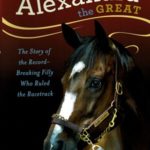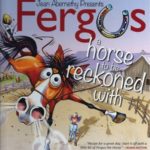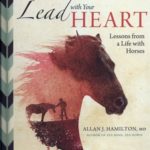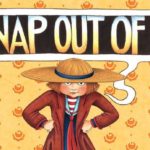Tom Bailey Saunders wouldn?t have believed a word of it. In fact, some men of his era might have tried to shut you up with a dose of frontier justice.
 Thomas Saunders V rides Red Hot Powder to round up some young horses to be branded and gelded. Journal photo
Thomas Saunders V rides Red Hot Powder to round up some young horses to be branded and gelded. Journal photoThis patriarch, born in 1816, moved to Texas in 1850 and saw several of his sons grow up to make names for themselves in the rapidly developing cattle industry. He saw his grandson develop the same sense of entrepreneurship that later made him the largest? cattle dealer in the United States.
But what’s going on today? Pshaw!
For starters, his kinfolk ? six generations later ? are still ranching in Texas. And they?re finding innovative ways of doing it, ways that weren?t even imagined in the mid-19th century.
Tom B. Saunders IV and his son, Thomas V, operate Saunders Ranch in Weatherford, Texas, where the family has been since 1934.
?Ranching?s not really a business,? Tom B. says. ?It’s a way of life.?
That cowboy lifestyle is one that is often celebrated on the big screen, and a whole host of companies and products want to tap into its simple power and beauty for advertising purposes. So, entrepreneurs know that where there’s demand, there’s opportunity.
Saunders horses and cattle have appeared in ads for Pfizer, Applebee?s restaurant and Bud Light, just to name a few. And the family has supplied livestock for films that include ?The Alamo,? ?Secondhand Lions? and the 2005 Tommy Lee Jones film ?The Three Burials of Melquiades Estrada.?
?Tommy Lee liked our horses real well, so that was good,? Thomas says with a chuckle.
Thomas has also appeared in RFD-TV?s, ?Extreme Cowboy Race,? which he won in 2005. He was a behind-the-scenes riding coach for PBS?s ?Texas Ranch House,? and he appeared on screen in a brief speaking role as a cattle procurer.
?We have a lot of fun with that stuff,? he says. ?It kind of supplements the drought, but we’re really rooted in our cattle business.?
The family runs about 600 head of cattle in Texas and Arkansas. About half of them calve in the spring, and the rest in the fall.
So what would the first Tom Bailey Saunders think to do with fall calves? It’s doubtful that he?d agree to hustle them around an indoor arena and run some of that valuable flesh off.
But his descendants have found a good market in providing calves to the Fort Worth Stock Show, a ranch rodeo held in Fort Worth and cutting competitions put on by AQHA, the National Cutting Horse Association and other groups with which the family has longstanding ties.
?We feel real good about being able to be a part of that,? Thomas says.
And when it’s time to brand the calves ? or tackle just about any project around the ranch ? ?it’s pretty much a family affair,? says Thomas? sister, Ann Catherine Williams.
Ann Catherine and her family, along with sister Amy Haydon and her family, pitch in. The tight-knit siblings all live on or near the?? ranch as do their parents. Each family contributes in its own way. Ann Catherine?s husband, Perry, helps with the horses, and Amy?s husband, Joel, is a master welder and fixit man.
Thomas says, ?My sisters married good men who contribute much to our operation.? His own wife, Lynn, is known as the ?saint? who makes it possible for him to cover as much ground as he does.
For Tom B., watching his grandchildren grow up roping and riding in the Saunders tradition ?couldn?t be any better. We’ve got a ?bubblegum crew,? we call it.? The family has a few full-time employees and occasional day workers, ?but we?ve got a family that will pretty well do it all, and these girls are just as good a hand as these boys. That’s what makes it good. That’s the pair of queens right there,? he says, gesturing to Madalynn and Leslie Ann, Thomas? daughters who were helping gather a pasture of cattle.
The seventh generation is rounded out by Ann Catherine?s son, Jordan, and Amy?s daughters, Mamie Catherine and Caroline.
Jordan and Madalynn compete in cutting, which hearkens back to another family tradition.
Tom B. Saunders III ? father of the current patriarch ? helped found the National Cutting Horse Association in 1947, and he served as the group?s second president. Later, his daughter married Jim Calhoun, who owned and trained 1957 NCHA world champion cutting horse King?s Pistol. Both Tom B. III and Jim were inducted into the NCHA Hall of Fame.
Tom B. IV continued those traditions, raising good horses and plenty of good cattle in partnership with Jim.
?We were real fortunate in growing up,? Thomas says. ?We always had good horses to ride. In order to make good horses, you pretty much have to know what a good horse is.?
Thomas? family encouraged his interest, and others furthered his education, including an employee who was a top hand with a horse; John Ed Rogers, a friend who found considerable success in the cutting pen; and AQHA judge Bill Glass. The young Thomas also found mentors in Bob Moorhouse, manager of the famed Pitchfork Ranch in Guthrie, Texas, and Craig Cameron, who later became a well-known clinician.
?I grew up in the right spot,? Thomas says, ?with guys who had a good, soft touch on the horse. It was all about getting one to ?cow? and getting a horse to help you, not just telling a horse what to do all the time.?
He began traveling to large ranches to start colts and help show ranch cowboys a better way to bring their young horses along. He has given Versatility Ranch Horse clinics for AQHA, and he has had a part in developing Road to the Horse, a colt-starting challenge that attracts thousands.
Thomas and brother-in-law Perry also start colts at home. Some of Thomas? charges have gone on to fame and fortune, like Peppys From Heaven, who won the NCHA nonpro cutting derby in 1991, Red White And Boon, who has won four AQHA and NCHA world championships, Cols Lil Pepper, who won the NCHA Super Stakes Classic and was first at the finals in 1993.
?I never did get where I wanted to go show a lot,? Thomas says. ?I just really had a lot of fun starting all of them.?
Perry has a background in training cutting horses, so he helps finish some of the mounts and he coaches the up-and-coming Saunderses.
Thomas crosses them on his own stallion, as well as some of the well-bred stallions owned by ranches at which he has started colts.
?Basically, what we’re doing is raising horses that mount us for what our cattle operation demands,? Thomas says, which means that the horses must be solid rope horses and adept at traveling across the hilly terrain of north central Texas. They also have to have plenty of cow sense. ?If they fit us, we keep them and ride them up until they?re aged geldings and then sell them.?
And Thomas is hoping that he’s getting to a point in life where he can stay home more, ride more of his own stock and enjoy his family.
?I sure don’t want to shut out anything,? he says of opportunities on the horizon, ?but I want to remember this time with my family, too.?
His mother, Ann, knows how important that is. The family is gathered on this cool Texas evening, sitting on the patio with glasses of iced tea, just a stone?s throw from a bunkhouse converted into a family museum. Photos there date from the early 1800s and several lifetime?s worth of memories line the walls.
?Family has really been important to us all,? Ann says, as the seventh generation of Saunderses mills around her. ?In fact, it really is the No. 1 thing.?







